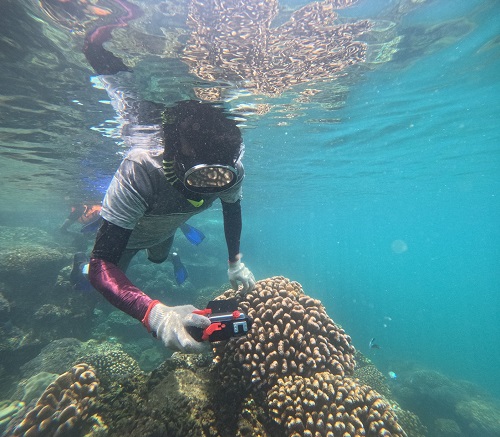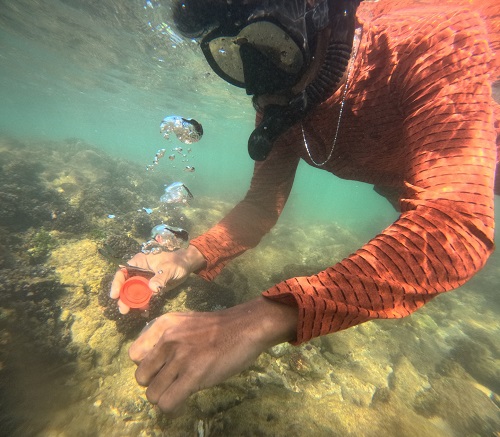
The Hambantota International Port (HIP) is redefining the relationship between industrial development and marine conservation, with a recent study revealing that 35% of coral coverage in its breakwater area is live—one of the highest rates among artificial reef systems in Sri Lanka.
Conducted by the Ocean University of Sri Lanka (OCUSL), the study highlights the thriving marine biodiversity within HIP’s semi-artificial reef, protected from fishing and pollution due to its high-security, low-disturbance location. Marine scientist Dr. M.F.M. Fairoz, who led the research, described the site as “a living laboratory,” noting its rich ecosystem of hard and soft corals, sponges, and over 20 species of reef-associated fish.

Unlike other reef initiatives that rely on artificial enhancement, HIP's reef has naturally developed on stable breakwater structures, making it a unique success story. The port now stands as the country’s second major coral protection zone, after Port City Colombo, but with greater natural coral recruitment.
The findings support HIP's broader environmental, social, and governance (ESG) goals, aligning with the UN Sustainable Development Goal 14: Life Below Water. HIPG CEO Wilson Qu emphasized that majority stakeholder CMPort prioritizes environmental stewardship across its global operations.
The research also contributes to international marine science, with OCUSL students participating in studies on sediment, fish biomass, and coral-microbial interactions. A comprehensive book on the findings is in development, aimed at informing future marine infrastructure design and reef protection policies.
“This isn’t just a commercial port,” said Dr. Fairoz. “It’s proof that sustainable port operations and marine ecosystems can coexist—and thrive.”
Subscribe to our newsletter to get notification about new updates, information, etc..